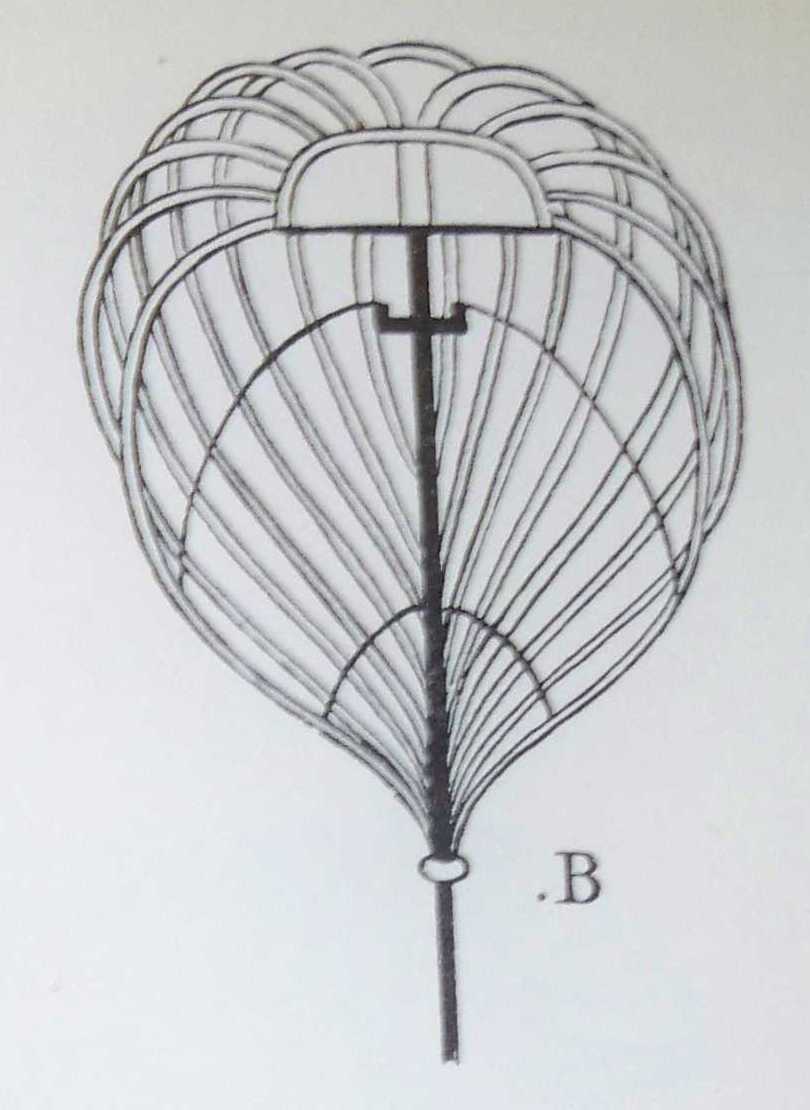Horo (cloak) on:
[Wikipedia]
[Google]
[Amazon]


 A was a type of cloak or garment attached to the back of the armour worn by
A was a type of cloak or garment attached to the back of the armour worn by
/ref> A light framework of wicker, bamboo or whale bone known as an ''oikago'', similar to a
''Samurai: The Code of the Warrior'', Thomas Louis, Tommy Ito, Sterling Publishing Company, Inc., 2008 p.181
/ref>


 A was a type of cloak or garment attached to the back of the armour worn by
A was a type of cloak or garment attached to the back of the armour worn by samurai
were the hereditary military nobility and officer caste of medieval and early-modern Japan from the late 12th century until their abolition in 1876. They were the well-paid retainers of the '' daimyo'' (the great feudal landholders). They h ...
on the battlefields of feudal Japan.
Description
A ''horo'' was around 1.8 m (6 ft) long and made from several strips of cloth sewn together with a fringe on the top and bottom edges. The cloth strips were sewn together and formed into a sort of bag which would fill with air like a balloon when the wearer was riding a horse.''Transactions of the Asiatic Society of Japan'', Asiatic Society of Japan, The Society, 1881 p.275–279/ref> A light framework of wicker, bamboo or whale bone known as an ''oikago'', similar to a
crinoline
A crinoline is a stiff or structured petticoat designed to hold out a woman's skirt, popular at various times since the mid-19th century. Originally, crinoline described a stiff fabric made of horsehair ("crin") and cotton or linen which was ...
, which is said to have been invented by Hatakeyama Masanaga
was a ''daimyō'' of the Hatakeyama clan and, according to some accounts, invented the '' horo'', a stiffened cloak used by messengers and bodyguards to improve their visibility on the battlefield, and to act as an arrow-catcher.
Masanaga is mos ...
during the Ōnin War
The , also known as the Upheaval of Ōnin and Ōnin-Bunmei war, was a civil war that lasted from 1467 to 1477, during the Muromachi period in Japan. '' Ōnin'' refers to the Japanese era during which the war started; the war ended during the Bun ...
(1467–1477), was sometimes used to keep the ''horo'' expanded. Attaching the ''horo'' generally involved a combination of fastening cords and possibly a staff. The top cords were attached to either the helmet
A helmet is a form of protective gear worn to protect the head. More specifically, a helmet complements the skull in protecting the human brain. Ceremonial or symbolic helmets (e.g., a policeman's helmet in the United Kingdom) without protect ...
or cuirass
A cuirass (; french: cuirasse, la, coriaceus) is a piece of armour that covers the torso, formed of one or more pieces of metal or other rigid material. The word probably originates from the original material, leather, from the French '' cuirac ...
of the wearer while the bottom cords were attached to the waist. The family emblem ( ''mon'') of the wearer was marked on the ''horo''.
Use
''Horo'' were used as far back as theKamakura period
The is a period of Japanese history that marks the governance by the Kamakura shogunate, officially established in 1192 in Kamakura by the first ''shōgun'' Minamoto no Yoritomo after the conclusion of the Genpei War, which saw the struggle bet ...
(1185–1333). When inflated the ''horo'' was said to protect the wearer from arrows shot from the side and from behind. This was tested in the Ancient Discoveries episode ''Ancient Special Forces'' (Episode 6 of Season 8) and found to be surprisingly effective at stopping arrows (shot from a period-appropriate Japanese bow) before they reached a target, or slowing them down considerably so that if they made it to the target they would not penetrate nearly as far as they would otherwise. In particular, arrows shot from such bows from behind that hit a billowing horo probably would not be able to penetrate the lacquered iron or leather armor of a samurai warrior riding on horseback when his horo was billowing out backwards. But this claim is only made for silk fabric with a diameter of some four to six feet that is billowing (as behind a rider on a horse going fast), not silk fabric that is not billowing or is lying flat against a surface.
Wearing a ''horo'' is also said to have marked the wearer as a messenger (''tsukai-ban'') or person of importance. According to the Hosokawa Yusai Oboegaki, the diary of Hosokawa Yusai (1534–1610) taking of an elite ''tsukai-ban'' messenger's head was a worthy prize. "When taking the head of a ''horo'' warrior, wrap it in the silk of the ''horo''. In the case of an ordinary warrior, wrap it in the silk of the sashimono
''Sashimono'' (指物, 差物, 挿物) were small banners historically worn by soldiers in feudal Japan, for identification during battles.
Description
Sashimono poles were attached to the backs of the chest armor (''dō'') by special fittings. ...
"./ref>
References
External links
* {{Japanese (samurai) weapons, armour and equipment Military communication in feudal Japan Japanese heraldry Samurai weapons and equipment Japanese upper-body garments Samurai clothing